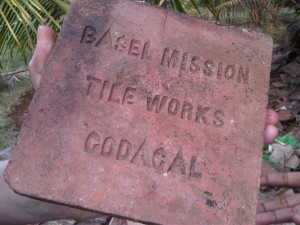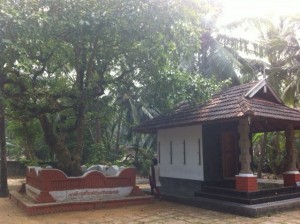TBI Travel: Discovering the magic of Nila
The Better India has chosen April as the Travel Month. As the summer holidays approach, parents and children all over India start making plans to visit some place they have
The Better India has chosen April as the Travel Month. As the summer holidays approach, parents and children all over India start making plans to visit some place they have never been to before. In our posts, you will learn of places very few know of and some places that many know of, but all presented to you with a completely different outlook and a very individual flavour. Throughout the month, you will come across several articles about destinations in India, written by various guest writers, each infusing the place with his or her unique perspective. So go ahead, read and discover the many hues of this splendid country. To kickstart the series, Meena Vaidyanathan takes us on a magical journey along the river Nila.
I have been visiting Kerala since I was a little girl. And thanks to a travel bug for a father who also has a special place for Kerala in his heart, I have had the good fortune to visit really interesting places across the length and breadth of Kerala. But the road trip I took over a few hours along the river Nila helped me see a side of Kerala that I didn’t know existed.

The first revelation was the story behind the famed Codacal Tile Factory, a name that I had been seeing on the roof tiles of my grandfather’s house, but knowing nothing about its historical significance. Especially that the Codacal Tile Factory was run by the Commonwealth Trust at Codacal, which is the successor to the Basel Mission Industries, is a standing reminder of the bold and revolutionary attempt at

social engineering in Malabar. I didn’t realise that Swiss and German missionaries started this initiative to support the newly converted Christians by providing them employment because they were ostracised by their communities post their conversion. Their activities spread rapidly in Malabar as the weaving factory at Codacal established in 1860. The Tile Factory at Codacal, started in 1887, is the second tile manufacturing industry in India. What I wasn’t prepared for was the spotting of remnants of some megalithic monuments that were buried in the courtyard of the factory. It was heart-wrenching to learn that some of these historical relics, some dating back to late 1800s and early 1900s were destroyed as recently as a few years ago over a petty land-grabbing issue!
I had been hearing about the Mamankam festival and the rich history behind it all my life, but visiting some of the newly renovated sites like Changamballi Kalari, Nilapadu Thara, Manikkinar, Pazhukka Mandapam, and Marunnara, which were closely associated with Mamankam festival was something else. Thanks to some recent restoration work by the archeology department and a lot of background work done by responsible tourism players like The Blue Yonder, one gets to know these places exist. But what was really enriching for me was to hear stories from Gopinath Parayil, the soul behind The Blue Yonder, about what makes these places truly special and be the inspiration for us to live our lives today knowing that so many amazing incidents and experiences happened in the past that we could learn from. Some that stay fresh in my memory even after many weeks of making that trip.

The Changamballi Kalari, the only one with an entrance from the right side, keeping with the Muslim traditions even though Kalari was essentially a Hindu dominated martial art form stands testimony to how communities could hold traditions together despite religious diversity. The ‘Changamballi family’, who manages this Kalari has an interesting history as well. Tulu Brahmins from Mangalore who settled in this part of the world were forced to convert into Islam during the invasion of Tipu Sultan in the Malabar region. They agreed to the conversion with a few conditions that the Sultan agreed. They continue to be unique in the sense that they are perhaps the only “vegetarian” Muslim community in Kerala with customs and traditions from their Tulu lineage followed while they practice Islam. What a beautiful story of amalgamation in society. Perhaps the closest is the one on how the Parsi community blended with the Gujarati Hindus upon their arrival on the Indian shores. Funnily enough, the local school kids who were following us curiously had no idea on why these sites were preserved or their historical significance, even though their school was next door! Perhaps the archaeology department needs to invest some effort in sharing why they have taken the pains to restore and revive something with the local population. And the local schools and teachers definitely have the onus on them to ensure the new generation understands the mantle they need to be proud of and preserve.

The visit to Thunjan Parambu, a place like no other where the father of Malayalam literature,Thunchathu Ramanujan Ezhuthachan taught and spent a better half of his life writing the Malayalam Ramayana. Legend has it that the Ramayana in Malayalam was recited by a parrot to the author so that he could write without a break!! I don’t even know what to call it- museum, literature park, breathtaking Kerala architecture. It was all this and more. The beautiful bronze statue of the parrot with an Iron stylus and the palm leaf, the unique Nox vomica tree that had sweet tasting leaves as opposed to its usual bitter sour one just added to the mystique. I need to bring my little boy back to this place that has the largest collection of Malayalam manuscripts, and get him to write on the white sands of Thunjan Parambu as is the tradition there to initiate the young into acquiring knowledge!

The impulsive decision to see the exciting Riverside Retreat that has been the hub for many a writer to be inspired got me to see the Nila from many angles, each more beautiful than the other. Almost like she was enticing me to discover more. Sitting on the banks of Nila finally as the sun was setting with the ezan from the mosque across the river almost touching the soul was surreal. It took every ounce of will power to get ourselves out of that magical place. I for sure will be back soon to discover yet another magic around Nila.
This story made me
- 97
- 121
- 89
- 167










